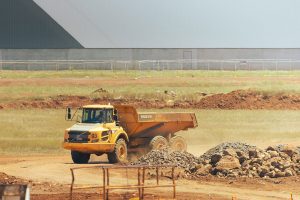As environmental concerns become more pressing and the demand for sustainable living solutions rises, it’s easy to dismiss manufactured housing as a viable green technology option. Critics argue that these homes can never be truly eco-friendly, but a deeper look reveals surprising innovations and benefits that challenge this misconception.
The Environmental Impact of Traditional Construction
Traditional construction methods are notorious for their environmental footprint. They consume large amounts of raw materials, generate significant waste, and contribute to greenhouse gas emissions. The construction industry accounts for approximately 39% of carbon dioxide emissions globally, making it a major contributor to climate change. Moreover, the process of constructing a single home can produce up to 4 tons of waste, much of which ends up in landfills.
The Green Potential of Manufactured Housing
Manufactured housing, on the other hand, offers a promising alternative. These homes are built in controlled factory environments, which allows for more efficient use of materials and significant waste reduction. Here are some key reasons why manufactured housing can lead the way in green technology:
- Resource Efficiency: The factory-based construction process allows for precise measurements and cutting of materials, minimizing waste. Excess materials can often be recycled within the factory, further reducing the environmental impact.
- Energy Efficiency: Manufactured homes are designed with energy efficiency in mind. They can incorporate advanced insulation, energy-efficient windows, and high-performance heating and cooling systems. These features significantly reduce energy consumption and lower utility bills for homeowners.
- Reduced Transportation Emissions: Traditional construction often requires multiple trips to transport materials to the building site. In contrast, manufactured homes are primarily transported in one trip, reducing transportation-related emissions.
- Sustainable Materials: Many manufacturers are now using sustainable materials such as recycled steel, reclaimed wood, and low-VOC (volatile organic compounds) paints and finishes. These materials contribute to healthier indoor air quality and a reduced environmental footprint.
- Water Conservation: Manufactured homes can be equipped with water-saving fixtures and appliances, as well as rainwater harvesting systems. This not only conserves water but also reduces the burden on municipal water supplies.
Innovations in Manufactured Housing
The manufactured housing industry is continuously innovating to improve sustainability. Here are some recent advancements that highlight the potential of this sector:
- Solar Integration: Many manufactured homes are now designed to accommodate solar panels, making it easier for homeowners to harness renewable energy. Solar-powered homes can achieve net-zero energy consumption, producing as much energy as they use.
- Smart Home Technology: Integration of smart home technology allows for better energy management. Smart thermostats, lighting systems, and appliances can optimize energy use and provide homeowners with real-time data on their consumption patterns.
- Green Roofs and Walls: Some manufacturers are incorporating green roofs and living walls into their designs. These features provide natural insulation, reduce stormwater runoff, and improve air quality.
- Modular Construction: Modular construction, a subset of manufactured housing, involves creating sections of a home that are then assembled on-site. This method reduces construction time, minimizes disruption to the surrounding environment, and allows for more precise quality control.
The Economic Benefits of Manufactured Housing
In addition to its environmental advantages, manufactured housing offers significant economic benefits. These homes are generally more affordable than traditional site-built homes, making them an attractive option for first-time buyers, retirees, and those looking to downsize. The reduced construction time also translates to lower labor costs and faster occupancy.
Overcoming Stigma and Regulatory Challenges
Despite its benefits, manufactured housing has faced stigma and regulatory challenges. Perceptions of poor quality and aesthetic limitations have historically hindered its acceptance. However, modern manufactured homes are built to high standards and can be customized to suit a wide range of tastes and preferences.
Regulatory barriers, such as zoning restrictions and financing difficulties, also pose challenges. Policymakers can play a crucial role in supporting the growth of manufactured housing by updating zoning laws, providing incentives for sustainable construction, and facilitating access to financing.
Case Studies: Successful Implementation
Several communities have successfully implemented manufactured housing as a green solution. For example, the Whispering Pines community in North Carolina is a net-zero energy manufactured home development that uses solar power, energy-efficient appliances, and sustainable materials. Similarly, the ZEDpod in the UK is an innovative modular housing solution that provides affordable, eco-friendly homes for young professionals and students.
The Path Forward
As we look to the future, it is clear that manufactured housing has the potential to revolutionize the housing industry. By embracing green technology, reducing environmental impact, and offering economic benefits, manufactured homes can provide a sustainable solution to the global housing crisis.
To fully realize this potential, collaboration between manufacturers, policymakers, and consumers is essential. Manufacturers must continue to innovate and improve the sustainability of their products. Policymakers need to create supportive regulatory environments, and consumers should be open to considering manufactured housing as a viable and desirable option.
In conclusion, manufactured housing represents a forward-thinking approach to sustainable living. By leveraging advanced technologies and sustainable practices, it can help us build a greener, more resilient future. As the demand for eco-friendly housing continues to grow, manufactured homes are poised to lead the way in the green technology revolution.





